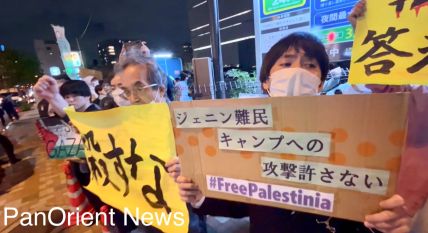|
|
Sports
Rugby World Cup Delivering New Hope to Japan’s Kamaishi, Northeast Region
Friday, September 20, 2019
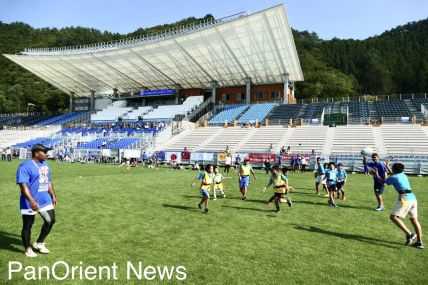
By Fred Varcoe
Tokyo- (PanOrient News) World Cup stadiums don’t come more remote. Kamaishi Unosumai Memorial Stadium is nearly 600 km by road from Tokyo in the northeast of Japan behind a seawall protecting it from the Pacific Ocean. It will take you five or six hours by train to get there. And the final train is a privately run, two-carriage affair. Seating 16,000 fans – 10,000 on temporary seats – at the stadium will not be a problem; getting them there might be.
But the inclusion of the Memorial Stadium as a World Cup venue is not about practicality or profit, it’s about history.
History, first, as a rugby town. The main town of Kamaishi – 10 km down the road from the new rugby stadium – was and still is home to a large steelworks, which not only turned out steel, but also helped give birth to one of Japan’s most famous rugby teams. The players on the Fuji Iron & Steel Kamaishi Rugby Club team were known as the “Northern Iron Men” as they won seven consecutive All-Japan Championships from 1979 to 1985. Nippon Steel maintains a plant in Kamaishi, but the rugby team is now a community-based affair known as Kamaishi Seawaves RFC.
While Kamaishi memorialises its past glories on the rugby pitch, it is the more painful memories of a region devastated by nature that remains uppermost in the minds of the local citizens.
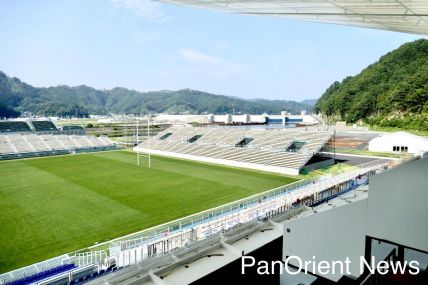
“We built this stadium to remember how we have recovered,” Kamaishi Mayor Takenori Noda says. “This is a holy place of rugby, but that’s history. We want to create a new history for our children. Now, this place is for the next generation.” It’s a poignant statement as the next generation was nearly wiped out by the tsunami that followed the 9.0 earthquake on March 11, 2011.
Kamaishi Unosumai Memorial Stadium is built on the site of two schools – an elementary school and a junior high school. The power and horror the 2011 disaster is captured in a photo of the elementaryRugby World Cup delivering new hope to Japan’s school in which a car is perched on a third-floor balcony. The 15-meter wave wiped out the area around the two schools. Fortunately, the children were able to escape to higher ground and then to safety via a road that had only been opened six days previously.
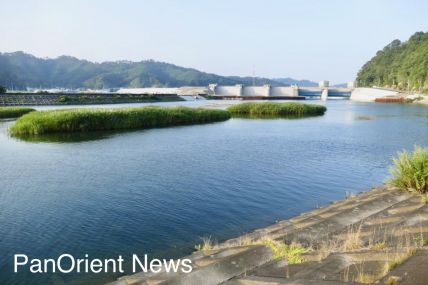
“The message I want to send from this stadium is how precious and important human life and human relationships are,” Mayor Noda told visiting media. The stadium, he emphasised, has not only been built as a memorial. “Our final purpose is to have children live here and to have hope,” he said. “That’s why we chose to host the World Cup. The town was alive when we had the rugby team here before. Having the World Cup here is our chance to experience that feeling again, for each individual citizen to be able to live here safely and with hope.”
Part of that hope was fed by the foreign players on the Seawaves team staying behind to help the small community after the tsunami left over 1,000 of its citizens dead or missing and wiped out 70 percent of the homes in the area.
A month before the World Cup, the stadium hosted an event called “Kamaishi Kids,” which brings children from other areas and other countries to play and learn and bond together. Former Japan player Masatoshi Mukoyama, who organized the event, said hosting the World Cup was just a start.
“Being able to hold the World Cup here is an achievement,” he stated. “But we must think about how we can use this to inspire and improve people’s lives.”
Kamaishi Kid Taku Kawasaki, 11, wants people to know about the wonders of Kamaishi and the surrounding area. “The best things about this place are the people,” he says.
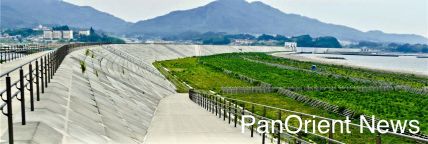
“Everyone’s so kind and cheerful and nice. And the nature here is fantastic. This is such a wonderful place.”
The stadium itself has 6,000 permanent seats and 10,000 temporary seats for the World Cup. Many of the permanent seats were made from cedar wood trees that were partially destroyed in a forest fire, while three rows of plastic seats come from Tokyo’s now-demolished Olympic Stadium and another three from the Tokyo Dome. The turf is natural grass with a synthetic under layer, a combination that is resilient in terms of divots and the long winters in Iwate. The stadium sits at the mouth of the Unosumai River, which is now protected by a 14.5-meter seawall.
Rugby World Cup Promotion Officer Tomaki Sasaki admitted it might not be up to the job. “If we have a tsunami the same height as before, the seawall might not be big enough.”
However, officials think the likelihood of that happening is very remote and escape routes are marked from the stadium. There is also a path leading up into the woods behind the stadium.
The stadium is served by a tiny station – Unosumai – on what is now called the Sanriku Railway Rias Line. Previously, it was separated into three different train lines that were largely destroyed by the tsunami, but on March 23 this year, it reopened as a privately owned, unified train line running for 163 km down the coast from Miyako to Ofunato.

The reopening of the train line is another symbol of how Iwate Prefecture and the region is recovering, but it is not “recovered.” The devastation was mind-boggling. In less than a day, the tsunami generated the equivalent of 14 years of waste and debris along the 200 km coastline of Iwate Prefecture. More than 5,000 of the prefecture’s citizens died and 26,000 homes were destroyed. The physical damage in Iwate alone was estimated at around $4.25 billion, equivalent to one year of the prefecture’s GDP.
Restoration work has progressed well, with seawalls nearing completion. In Rikuzentakata, a gigantic 2-km-long, 12.5-meter high seawall is nearing completion at a cost of $400 million, plus another $200 million for a floodgate at the mouth of the Kessen River where the tsunami reached 8 km upstream. Within that seawall, land for new homes is being raised by 10 meters. Local government officials say that even if another 15.5-meter tsunami hit the area, the new housing area would not be inundated. Houses will not be permitted in low-lying areas. There will, however, be a memorial museum and park within the shadow of the wall and even a new man-made beach on the sea side.
Standing alone at the south end of the seawall is a single pine tree, which has come to symbolize the survival of the town and the region. Before the tsunami, there were 70,000 pine trees behind the beach. Now there is one, known as the “Miracle Pine.”
The Miracle Pine is one of the many symbols of recovery in Iwate. Tourism is almost back to pre-earthquake levels, many homes and businesses have been built or repaired, the railway line has been restored and Kamaishi is a rugby town once again. The World Cup is not only bringing rugby to the area; it is bringing hope, life and a future.
© PanOrient News All Rights Reserved.
|
|





